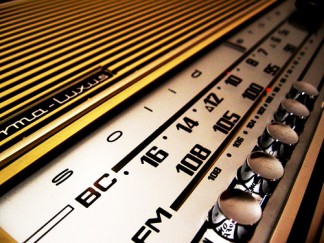Radio in the Digital Era
The More Things Change, The More They Stay The Same
 It is no secret that traditional media is in need of an overhaul of their business models. New technologies have created alternatives for consumers around the world to engage in, and media outlets like newspaper and radio haven’t adjusted their business models in unison with it to create new revenue opportunities for themselves. Many new formats continue to emerge, attempting to enhance music consumption. Internet radio and websites like Pandora have doubled in size since 2009, with over 94 million active users as of early 2011. The advance of alternative formats has many skeptics forecasting the slow death of traditional radio. However, we are here to explain why radio won’t die, why internet radio isn’t all its cracked up to be, the importance of radio promotion for all artist, and what we believe the new radio business model should look like.
It is no secret that traditional media is in need of an overhaul of their business models. New technologies have created alternatives for consumers around the world to engage in, and media outlets like newspaper and radio haven’t adjusted their business models in unison with it to create new revenue opportunities for themselves. Many new formats continue to emerge, attempting to enhance music consumption. Internet radio and websites like Pandora have doubled in size since 2009, with over 94 million active users as of early 2011. The advance of alternative formats has many skeptics forecasting the slow death of traditional radio. However, we are here to explain why radio won’t die, why internet radio isn’t all its cracked up to be, the importance of radio promotion for all artist, and what we believe the new radio business model should look like.
New Technology Emerges
In the last year, there has been a massive tech boom in our world economy, particularly in media consumption and social networking / communication platforms. Companies like Pandora have created competition for traditional radio companies by not only offering alternative music delivery methods but also competing for significant advertising dollars. They have grown quickly with their simplistic and pointed advertising strategies, active fan engagement, customization options, and continued integration with new technologies.
Even with Pandora’s massive boom in users, recent IPO release, and active advertising cash flow, Pandora still posted a $6.8 million dollar loss in the most recent fiscal quarter. This presents an interesting point of discussion: In theory, anywhere you can grab an audience the size of Pandora’s you should be able to monetize it; the more listeners, the more attractive your service is to advertisers. By that logic Pandora should be printing money. However, the cost model for streaming music is very different from the cost model of radio broadcasting. The costs for terrestrial radio stations are essentially fixed; a license, transmitter, studio and staff. Those costs are the same regardless of whether they have one listener or 1 million. This is in contrast to the streaming model, where each new listener equals additional costs for bandwidth and music licensing.
And while bandwidth costs are regularly shrinking, music licensing, which accounts for nearly 50 percent of Pandora’s current expenses, is set to increase significantly over the next five years. According to the terms of the current agreement between web-casters and SoundExchange, Pandora currently pays $0.00102 per song it serves though it’s a free streaming service. With music licensing set to increase over the next 5 years, it should be clear that Pandora still has some work to do to become profitable.
Radio Advances and Maintains Following
There was a time when radio listeners were unable to know who was playing on the radio unless previously stated by DJs or by actively seeking out the information in their LOCAL radio stores. This has changed with the advancement of radio technologies providing information on radio displays. These and other advances have increased the value of radio in music discovery. Other music discovery advances, such as music recognition software / apps, have further empowered the listener in the discovery of music. The moral of the story is that listeners continue to be presented with a variety of tools and services to discover and enjoy music. Radio still maintains a large presence among these tools, primarily due to the existing infrastructure (i.e. car radios) that has been in place far before the emergence of recent technologies and advances. The loyalty of less-tech-savvy users to radio format is a factor that should not be discounted as well.
The fact of the matter is that radio still maintains strong core audiences. The radio’s strengths lie in two major points: 1) Radio is the premier location for music discovery 2) Their hyper-localism makes them ideal for targeting demographics geographically. While the current trend in radio broadcasting today is to rely on national syndicated content, hyper-localism is and has always been at the heart of radio’s success.
A recent study conducted by American Media Services sheds light on radio relevance.
*64% of American adults listen to the radio daily
*80% usually turn on the radio when they get in their car
*73% are listening the same or more than they did five years ago
*39% of Internet radio listeners did so in the past week, up from 23% six months ago
*48% expect to listen to radio over the internet in the future, up from 38% six months ago.
*Radio remains the number one way that Americans learn about new music. Nearly half (49 %) cited the radio, compared with 27% from friends, relatives or other word of mouth. Lesser sources included TV and reviews in newspapers or magazines.
Radio and Digital Music Sales – The Correlation
Itunes Top 100 of & Top Listens Charts 06/2011
*15,800,000: The average number of weekly commercial radio listens that each (and every) song in the Itunes Top 100 got in one week.
*21,880,000: The average number of weekly commercial radio listens that each song in the Itunes Top 100 got in one week, when that artist had 2 or more songs in the Itunes Top 100.
*51,300,000: The average number of weekly commercial radio listens that each song in the Itunes Top 100 got in one week, when that artist had 3 or more songs in the Itunes Top 100.
*71,922,000: The number of weekly commercial radio listens that the #1 song in the Itunes Top 100 got in one week.
*100 percent: The number of songs in the Itunes Top 100 where the artist received major commercial radio airplay in major U.S. markets for this or other songs of theirs.
*0 percent: The number of songs in the Itunes Top 100 where the artist NEVER received major commercial radio airplay in major U.S. markets for this or other songs of theirs.





